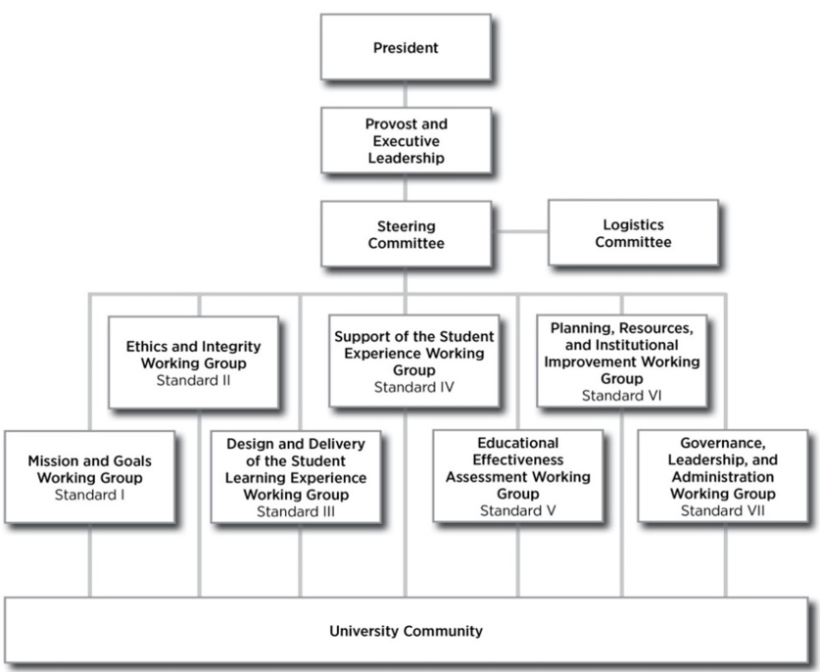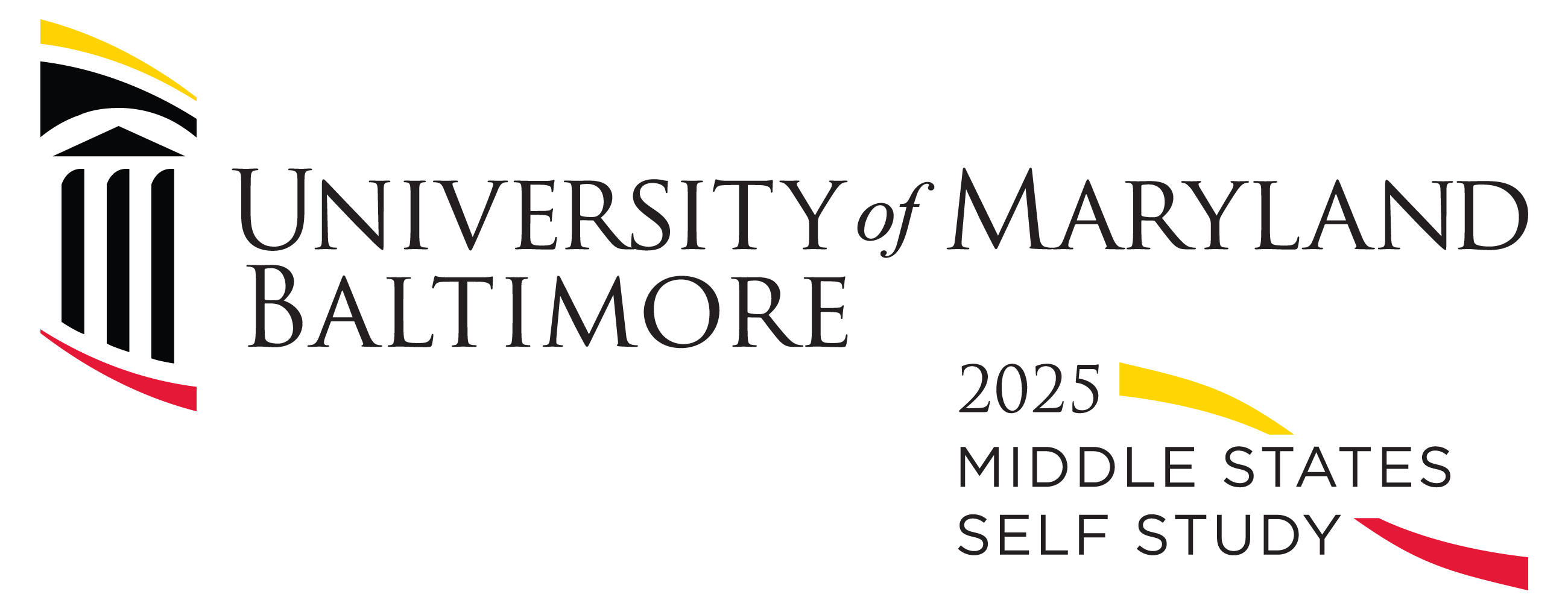Planning for the Self Study
The Steering Committee co-chairs and eight staff from the Office of the Provost and related offices participated in the Self-Study Institute. In addition, four members of the Office of the Provost participated in the Middle States Annual Conference from Dec. 7-9, 2022.
Four key questions drove UMB’s early considerations:
- What does UMB want to gain from the Self-Study process?
- How can UMB leverage robust historical strategic planning and professional accreditation to derive impactful Self-Study lines of inquiry?
- How can UMB use the Self-Study process to strengthen the institution over the long term?
- What design model is appropriate for UMB?
On Jan. 17, 2023, President Jarrell, in one of his letters to the community, announced the start of the planning process for UMB’s accreditation site visit in 2025. He appointed Roger J. Ward, EdD, JD, MSL, MPA, provost and dean, Graduate School, and Mark A. Reynolds, DDS, PhD, MA, dean, School of Dentistry as co-chairs of the Steering Committee. The makeup of the Steering Committee reflects a broad array of leaders from across the UMB community.
In his letter of appointment to Steering Committee members, President Jarrell relayed the following charge:
- Select the Self-Study design most appropriate for UMB. The themes in the design should align with our core values and the priorities in our Strategic Plan. This task should be completed no later than April 25, 2023.
- Design an inclusive and transparent self-study process that actively and deliberately seeks to engage members of the University community from every corner of campus.
- Produce a Self-Study report that demonstrates our compliance with the Middle States Commission on Higher Education accreditation standards and provides forward-looking recommendations to move the institution further along its quest for excellence in graduate and professional education, research, clinical activities, and service for the public good.
The following chart depicts UMB’s Self-Study leadership structure:

Working Groups
On March 7, 2023, the Steering Committee met for the first time. At the meeting, President Jarrell presented his formal charge. Additionally, introductions were made amongst the Committee members. Immediately thereafter, Drs. Ward and Reynolds provided an orientation to Middle States accreditation and described the self-study process. Before the meeting concluded, Committee members were sorted into threes and each trio became the leadership of one of the seven Working Groups. The selection of the Working Group members is ongoing and comes from a broad cross-section of faculty, staff and students.
At the April 25th meeting of the Steering Committee, each Working Group presented their Standard and the related Criteria followed by a general process discussion. The May meeting will offer an opportunity to share with the Committee a review of the manner in which they will engage with the Evidence Inventory.
The Steering Committee and Working Groups are supported by the Logistics Committee, a ten-member team comprised primarily of Provost Office staff and led by Provost Roger Ward, one of the Steering Committee co-chairs.



